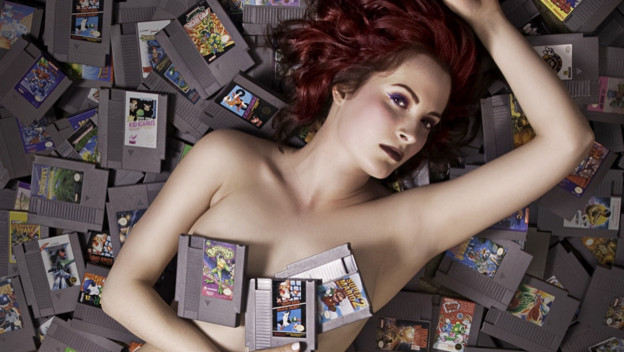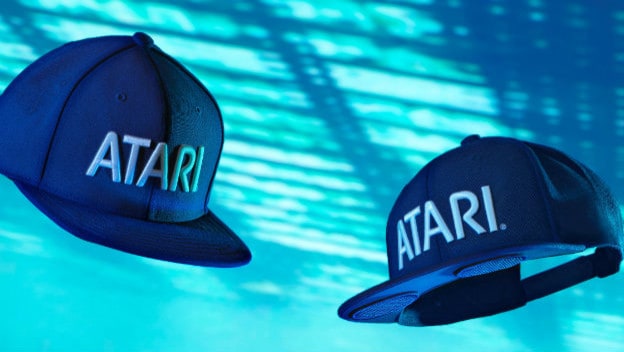Companies love to bank on nostalgia. Each one trying to sell something does it. It’s why we’ll occasionally see rereleases of older Barbies or Hot Wheels cars, remakes of iconic films, remasters of beloved games, and so on. But at what point does trying to cash in on nostalgia do more harm than good? When do companies push things a little too far and ruin not only their profit margins, but perhaps even taint their customers’ memories of a good thing?
In the case of a few video game companies, I think we’ve already reached that point. We may have even passed it. It is all well and good to exploit things we once loved in moderation. Getting an opportunity to buy something special once in a while is totally fine. It acts as a nice callback to our youth. But things like the Atari Speakerhat, Ataribox, Flashback plug-and-plays, and even Super NES Classic Edition are pushing things too far.
Let’s start with the most ridiculous item. I’m talking about the Atari Speakerhat. It is exactly what it sounds like, which is a hat with the Atari logo on it and two speakers and a microphone built into the bill of the hat. It will have a rechargeable battery built into it. People are supposed to use it to listen to music, take phone calls, and even share the same music by going into a co-op mode where everyone syncs up to the same stream over Bluetooth. It is, in a word, ridiculous. It looks silly. It sounds silly. When we finally get a price for it, I fully expect for it to be silly too. It feels like Atari is flailing for money, hoping to cash in by slapping its iconic name onto a hat, popping in extra tech we probably don’t need, and hoping someone will actually buy it.
But then, at least we know exactly what the Atari Speakerhat is. Naming a thing the “Speakerhat” makes its function pretty clear. The Ataribox isn’t quite as transparent. It’s some kind of gaming console designed to definitely play digital versions of old Atari games, but possibly unnamed, newer digital games too. The thing is, we know nothing about it. The fact that it will exist was revealed at E3, and now all we have is a prototype design. Seeing as how Atari won’t say anything, I can’t help but fear it will be another Ouya – a microconsole that is only capable of playing emulated classic games and Android ports that are manageable without a touchscreen.
There are also the Flashback consoles to consider. You know these. They’re the plug-and-play systems that give you around 50 or 60 Atari, Colecovision, Intellivision, or Sega Genesis games to play. Sometimes, there are handheld models. Despite plenty of earlier iterations being on store shelves, AtGames is releasing new $79.99 Atari Flashback 8 Gold and Genesis Flashback models, this time with slightly more games than ever before! Not to mention the $59.99 handheld Atari Flashback Portable Game Player and Sega Ultimate Portable Game Player. They’ll all be out this fall, which means you’ll see them at hopefully half that price by December and January. You know, in the event you don’t already have one after finding it at a flea market, garage sale, or Goodwill.

Finally, there is the Super NES Classic Edition. In theory, this should have been the best possible callback to a more nostalgic period. It has 21 incredible games, with one being the never-before-released Star Fox 2 . It looks exactly like a miniature Super NES. It even has two perfect controllers included with it, so you can immediately enjoy the multiplayer. Except Nintendo has tainted the thought of it by making it a limited product. We know the company is only committed to offering it in 2017, and it comes out on September 29. Pre-orders haven’t opened for it in North America yet. The NES Classic Edition already showed how scarce it could be. Instead of creating more demand for it, it is already causing people heartache.
It really is too much. We don’t need companies getting desperate for more money and trying to use that to pull at our heartstrings and memories. Good products, like the Super NES Classic Edition, end up being more trouble than they’re worth due to prospect of supply not meeting demand. Ones that are tolerable become intolerable when a new version is trotted out every year with slightly more options and a higher price tag. Then, we have the desperate companies struggling to remain relevant with a microconsole the market doesn’t need and Speakerhats. It’s all too much.
